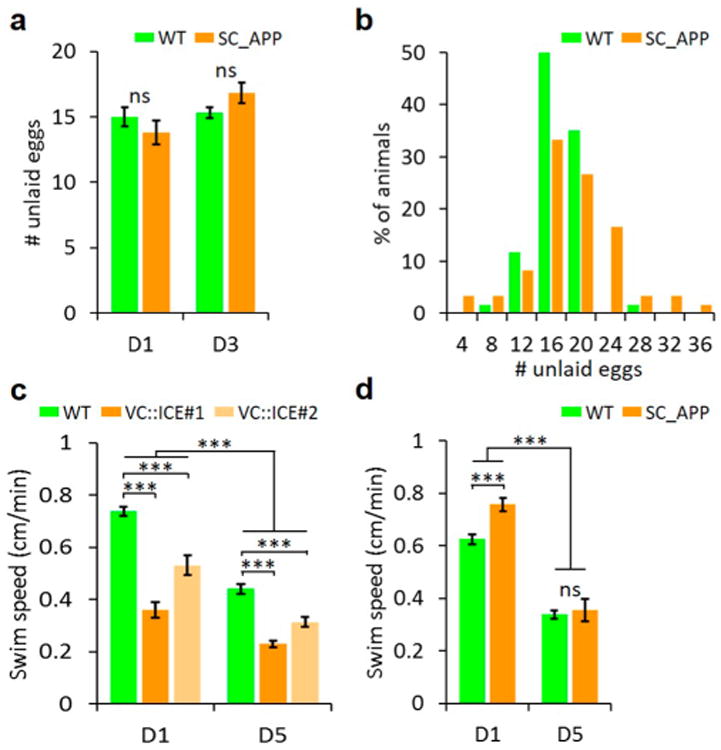Figure 2.

Subtle behavioral phenotypes in C. elegans model with SC_APP-induced neurodegeneration. (a) Mean number of unlaid eggs ± SEM on D1 and D3 of adulthood was similar for SC_APP and WT worms (n = 61–70). (b) Distribution of the number of unlaid eggs in the same set of D3 adults as in (a) shows a broader distribution for SC_APP than WT worms (n = 63–71). The percent of worms with ≥ 20 eggs was significantly higher in SC_APP than WT worms (Fisher's exact test, P < 0.01). (c) Mean swim speed ± SEM on D1 and D5 of adulthood for WT and VC∷ICE strains. There was an overall reduction in swim speed with age (Holm-Sidack posthoc test, P < 0.001, n = 50–113). Genetic ablation of VC neurons caused an additional reduction in swim speed at each age relative to WT (Holm-Sidack posthoc tests, P < 0.001, n = 50-113). (d) Mean swim speed ± SEM on D1 and D5 of adulthood for WT and SC_APP strains. There was an overall reduction in swim speed with age (Holm–Sidack posthoc test, P < 0.001, n = 46–105). SC_APP worms were faster than WT on D1 (Holm–Sidack posthoc test, P < 0.001, n = 46–105), but no difference was seen on D5.
